What milestones does your company need to reach in 2019?
As marketers and SEO professionals, charting the path toward our goals is one of the exercises we should be mapping out at a minimum each year.
Here’s a three-step framework for setting SEO goals and developing a plan to achieve them:
- Measuring targets: Where do we need to be?
- Establishing SEO benchmarks: Where are we now?
- Developing an action plan: How are we going to get there?
1. Measuring Targets
Every marketer on your team should be able to answer, “What does success look like 3/6/12 months out?”
Are we looking at revenue growth from new customers, existing customer account expansion, retention, and/or lowering churn?
In consulting with teams over the last decade, it’s often only the most senior person on the team who knows this answer.
In order to get your entire team on board with your marketing plan, every teammate should know the answer to this question.
Revenue targets (or lead value via a specific quantity/quality of leads) are the most common type of goal that marketing departments are tasked with achieving.
Revenue figures can then be translated into the number of new customers you need to bring in monthly based on average order size. Here’s the equation:
Number of new customers you need to acquire = Revenue needed / Average order size
Once you understand the number of customers you need to acquire, you can work backward to figure out the number of opportunities, SQLs, MQLs, leads, and website visitors you need to bring in to hit your goals. This is all based on conversion rates.
Your CRM and/or marketing automation platform should be able to provide these conversion rates across lifecycle stages and channels (organic vs. paid vs. referral).
Here is a helpful calculator your team can use to figure out these metrics.
2. Establishing Benchmarks
At this point, you should have a clear understanding of the number of customers, opportunities, leads, and visitors your website needs to bring in to hit your overall marketing goal.
What percentage of this goal is SEO responsible for?
Your ability to hit your SEO goal can be measured based on this series of benchmarks, which define where your brand stands today.
SEO Share of Voice (SOV)
SOV helps us understand how well your brand ranks based on a fixed set of topics or keywords.
For what percentage of those does your brand rank on the first page of Google?
This exercise gives us the competitive benchmark from both our direct and indirect SEO competitors. It helps us understand the types of content formats that are ranking well for my target keywords and exposes new content distribution channels to reach my customer.
Here is an example of an SEO share-of-voice analysis looking at the “construction management software” vertical. This shows you that software review websites (like Capterra and SoftwareAdvice.com) “own” the largest share of voice within organic search listings.
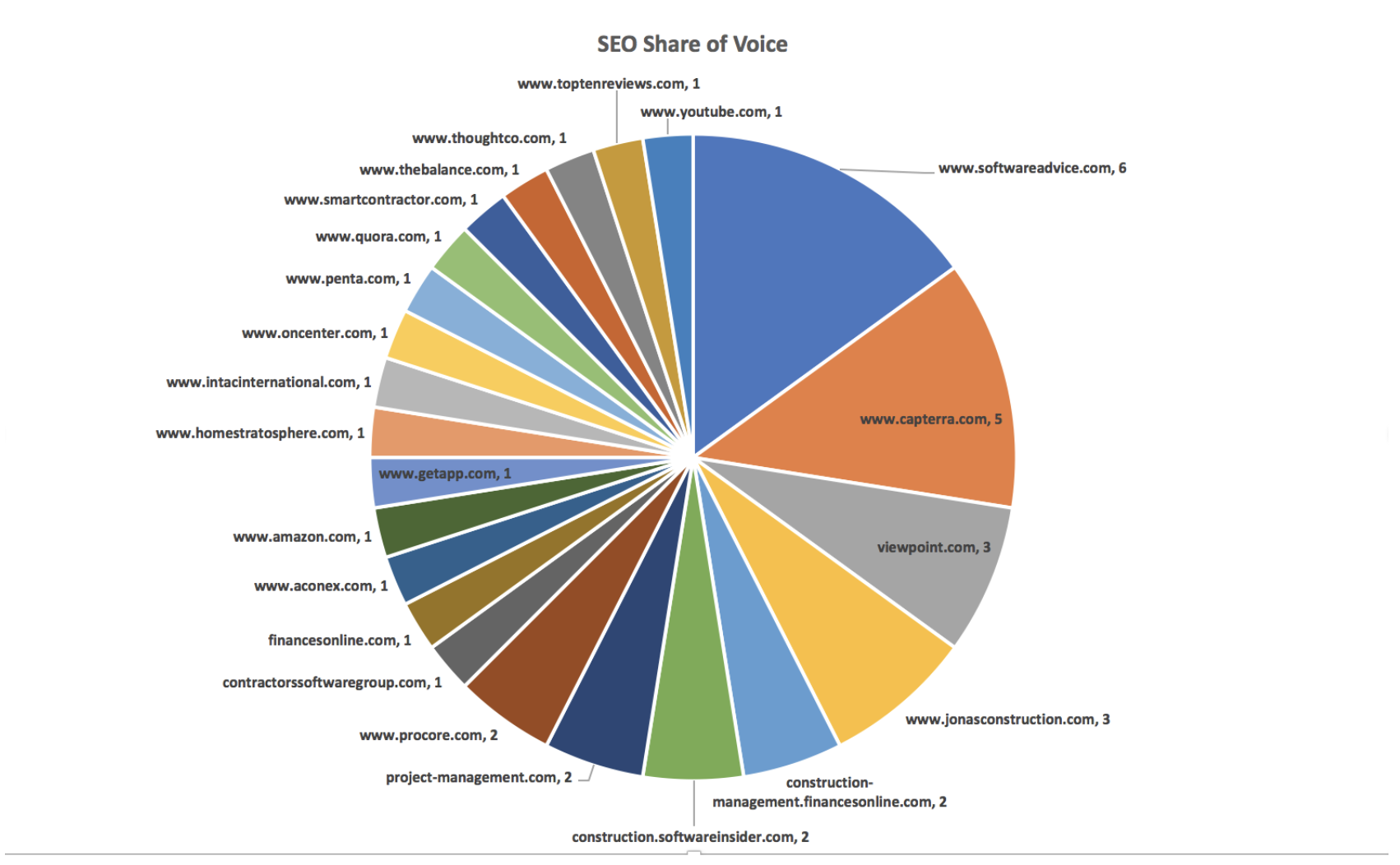
Competitive Ranking Benchmark
Next, pull all of the keywords that you and your direct competitors are ranking for within search. SEMrush’s gap analysis tool makes this a breeze.

Traffic, Leads, Opportunities & Customers by Channel
How does organic traffic perform compared to paid, referral, and other sources? Pull this benchmark to identify overall growth from last year to this year.
This benchmark shows you the potential you have for scaling into next year, assuming you don’t change your marketing program. This can be done in your marketing analytics platform or reporting solutions like Databox, as seen here. (Full disclosure: The agency I work for is a Databox partner).)
This report pulls the benchmark for how many total keywords you rank for (that’s tracked in SEMrush’s massive index) compared to your competition.
Next, take an export of this report and categorize your keywords by general topic. This will give you a benchmark for the topics that you have “ownership” of within search. It also shows you how much work you are going to have to put in to beat out your competitors. (Full disclosure: The agency I work for is an SEMrush partner)
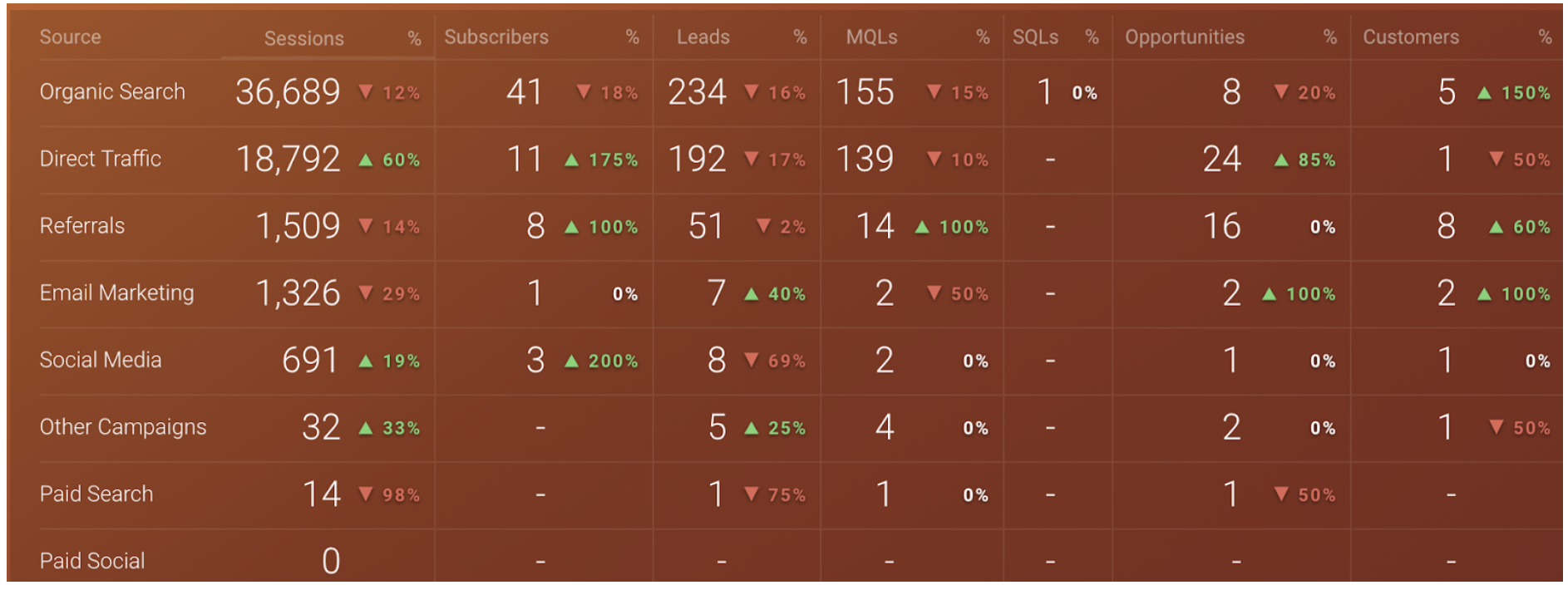
Conversion Rates
How well does your marketing team convert visitors into leads and leads into customers?
Pull these conversion rates by channel to identify the overall quality of your visitors and leads.
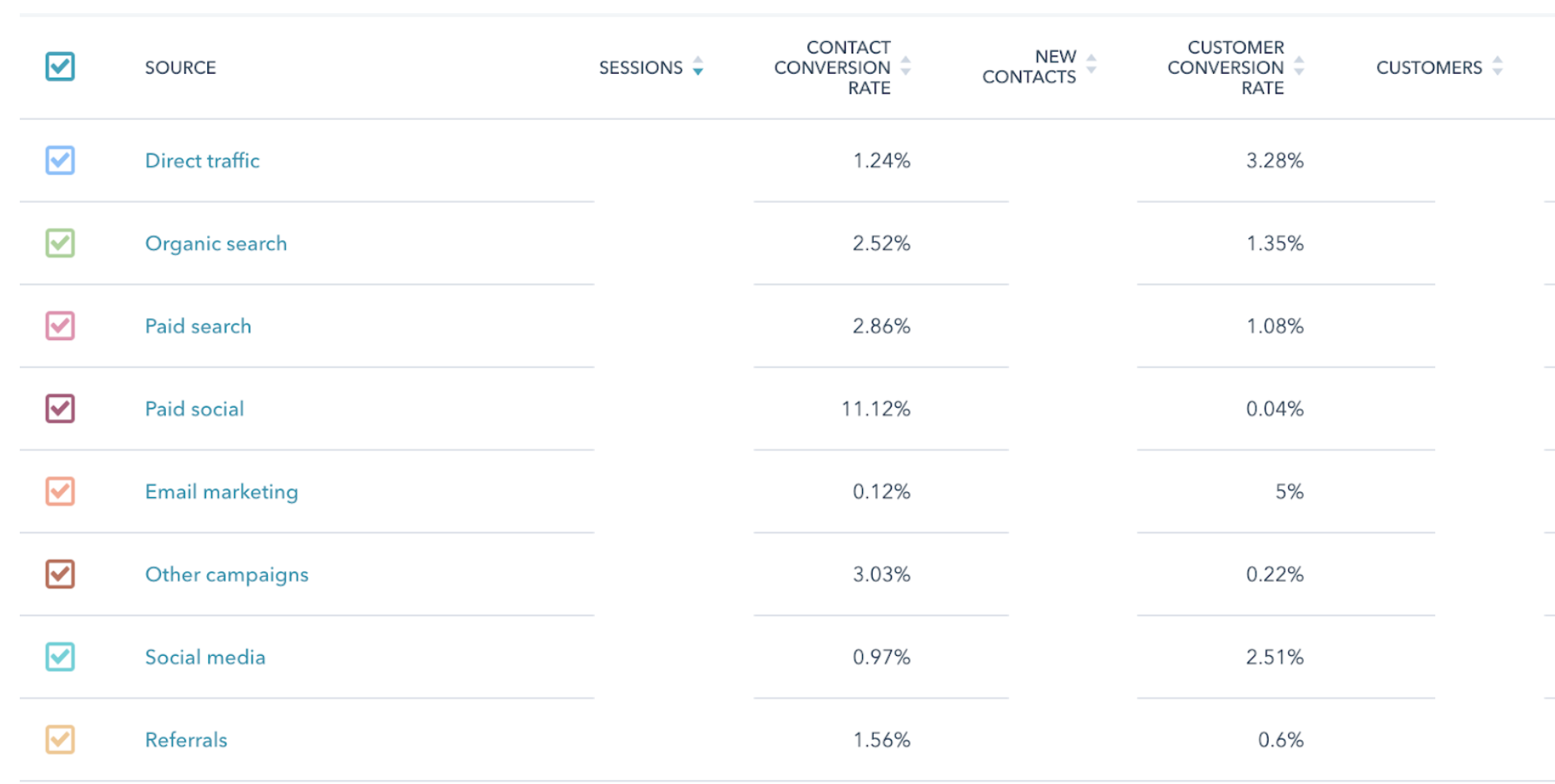
Rich Snippets
Google is constantly adding new features into the SERPs. There is a huge first-mover advantage for those who can most nimbly adapt.
Benchmark the percentage of rich snippets your brand ranks for against your top competition. This benchmark exposes other content formats or markup that you could be taking advantage of to gain rich/featured snippets.
Moz and SEMrush both offer this type of analysis to measure this over time.
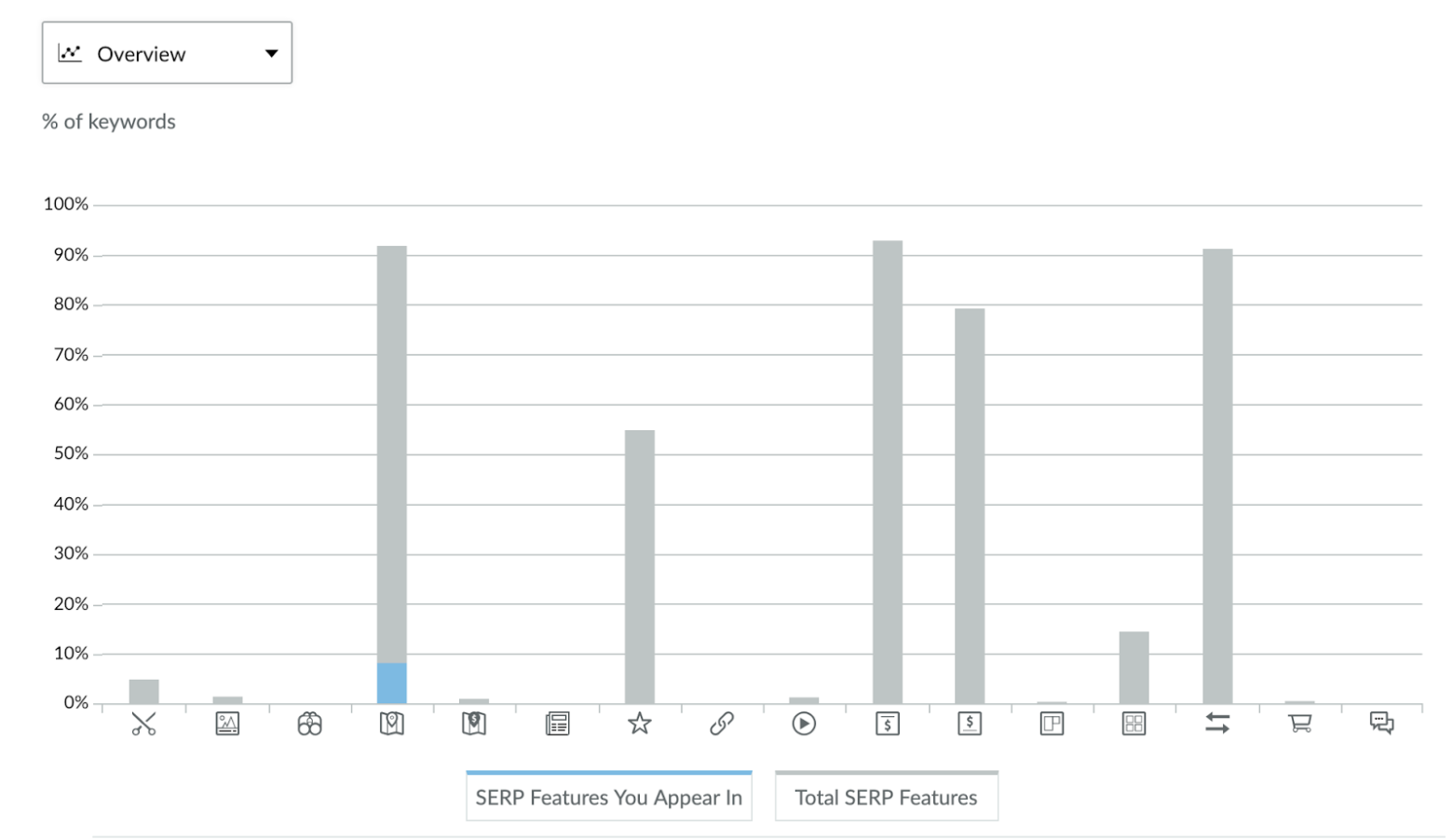
Technical SEO Issues
Measure the factors that are impeding your website from being indexed or ranking higher in search. There are a number of tools to crawl your site and measure your overall on-page SEO health.
Calculate the number of critical errors versus less important SEO issues to see what kinds of low-hanging-fruit, quick changes could have a noticeable impact. This is an example from SEMrush’s site audit tool.
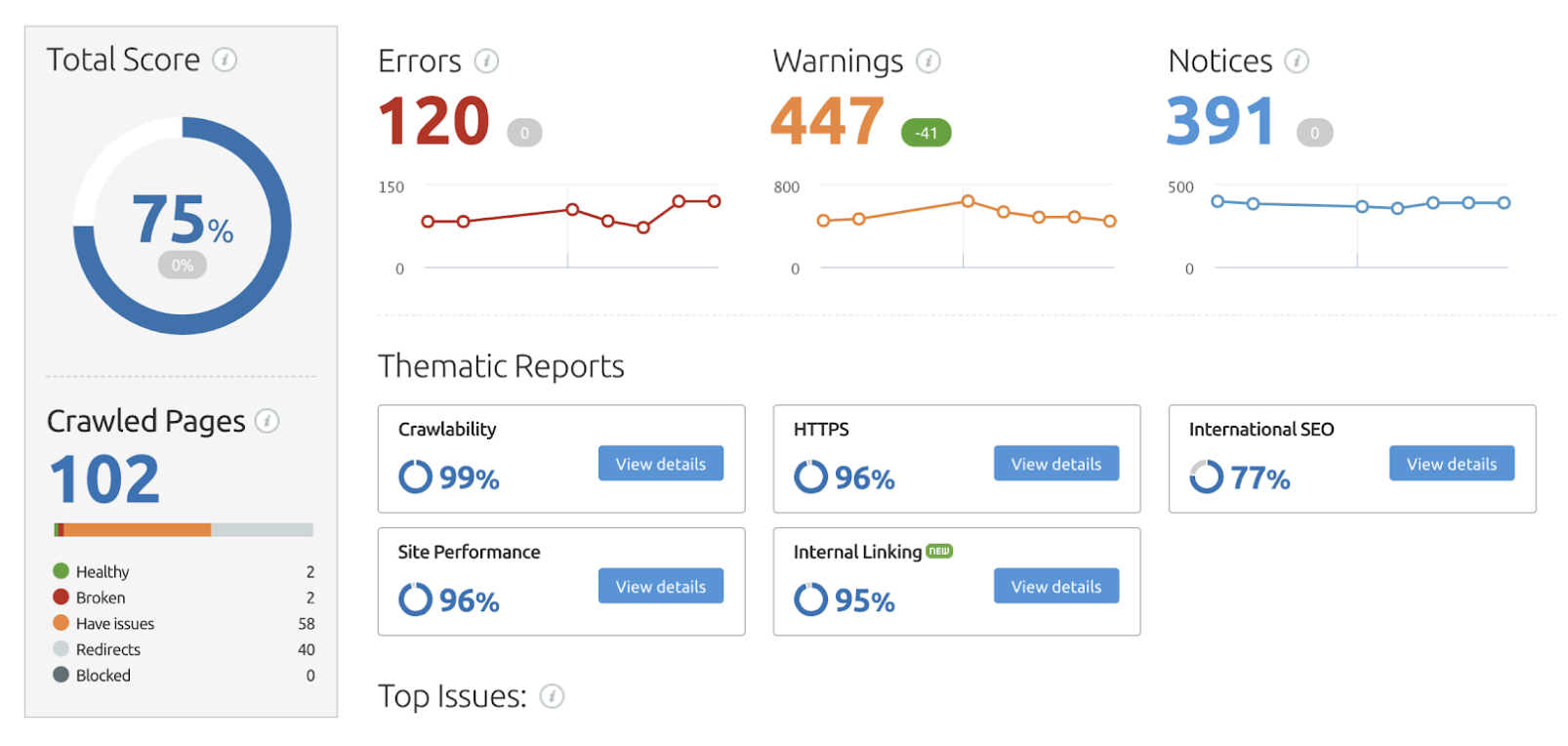
3. Developing Your Action Plan
There are only six levers that you can pull on to reach your SEO goal:
- Increase traffic volume.
- Improve traffic quality.
- Increase lead volume.
- Improve lead quality.
- Increase customer volume.
- Increase customer quality and average order size.
Yes, this is simplified, and you can break this out into many more sub-levers. However, by distilling down your action plan, you can prioritize your marketing investment and not feel like you are trying to move all six levers at once.
Your SEO plan should be based on:
- Your benchmarks.
- Search demand.
- Competition.
- Resources/budget available.
- Seasonality for your category.
Here are some SEO action items to work into your plan:
Expanding Your SEO Footprint
By completing your benchmarks, you’ve identified new topics you don’t rank for, indirect competitors also vying for these rankings, and the formats of content that does rank.
Expand your SEO footprint through content creation or optimization focused on non-ranking topics identified in your competitive ranking analysis.
Be aware of how your traffic quality can shift based on content changes to your website. Not all traffic is created equal.
Driving more top-of-funnel traffic to your blog isn’t necessarily going to drive immediate revenue.
You can also expand your SEO footprint off your website. In the share-of-voice analysis, we identified third-party review sites that “own” the lion’s share of keywords within a vertical.
Expand your SEO footprint by building out your presence on other websites through active review building and profile completion.
Increasing CTR of Current SERPs
When’s the last time you did a search for your brand name? Are there factors why people aren’t clicking on your current SERPs?
Two of the biggest culprits of low CTR in well-ranked branded SERPs are either poorly optimized title/meta tags or poor reviews/ratings from other industry review sites.
A nearby review website SERP showing a two-out-of-five-star rating can quickly turn people away from considering your company. In this case, a big part of your SEO program should be establishing a proactive reviewing-building program.
Increasing Conversion Rate from Existing Organic Traffic
As you know, UX plays an important role in ranking. It also plays a role in getting people to convert and buy from you.
Use heat mapping software like Hotjar or Lucky Orange to watch people navigate through your website. Where are they getting stuck?
Extract more value from the traffic you are already driving to your website.
Reducing the Threat of Rank Loss
Lastly, technical issues and competitive pressures can cause SEO damage over time.
Prioritize critical errors in your yearly SEO plan. These tend to pop up more frequently during a website redesign or CMS migration. So allocate resources if that is on the docket for this year.
One the most difficult threats to account for is battling competitive pressures. Conduct your share-of-voice analysis on a quarterly basis to identify competitors that are consistently growing their organic presence.
Google Trends can also provide insight into overall consumer search trends to identify external factors that influence your organic search traffic.
Conclusion
The biggest factors that are going to weigh into goal-setting are your available resources, budget, and timeline.
You can’t be expected to quickly make significant SEO contributions to your overall marketing goal with zero budget or internal support to bring changes to life.
More Resources:
- 12 SEO Goals for 2019: Ideas That Will Inspire You
- The 9 Most Important SEO KPIs You Should Be Tracking
- A Complete Guide to SEO: What You Need to Know in 2019
Image Credits
All screenshots taken by author, January 2019





